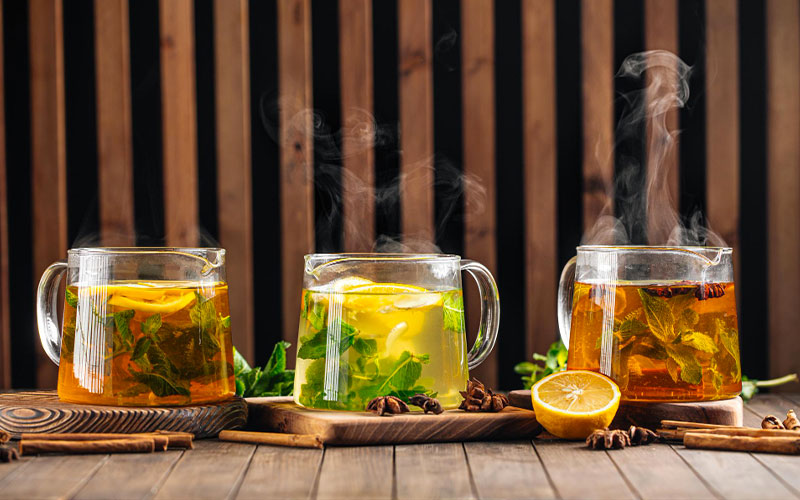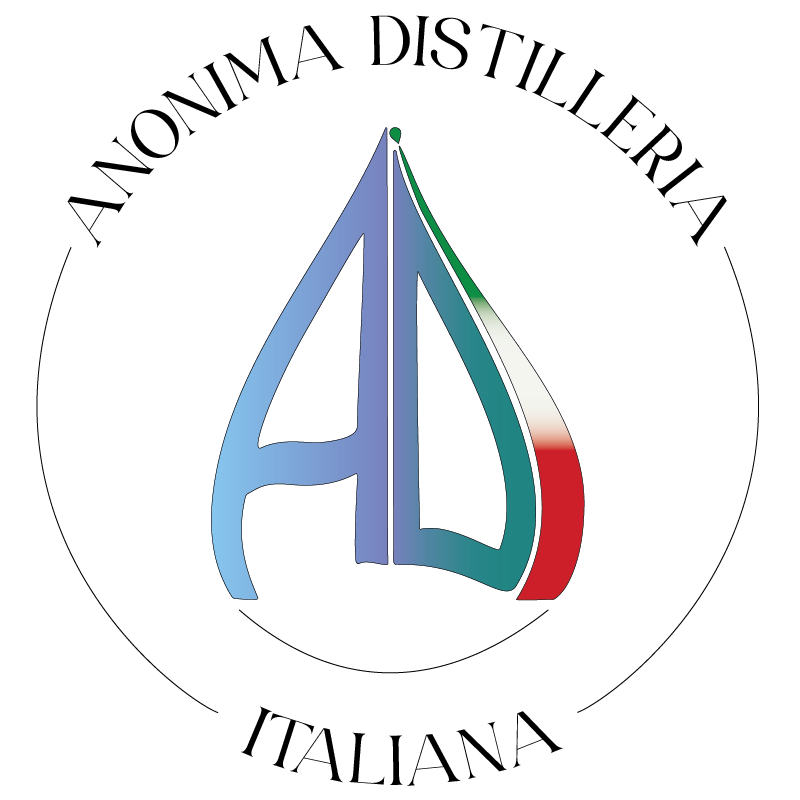- Free Shipping with an order of € 125.00 or more
- Free Shipping from € 125.00

Who has never heard of herbal teas? Our mothers and grandmothers educated us from an early age about herbal teas and infusions for use in hygiene and cosmetics as well as for use in food and drinks.
What to say about the well-known chamomile used as a pleasant and soothing drink but also as a liquid to cleanse and make soothing compresses for the skin and eyes. We have acquired the knowledge that an infusion is something hot that is made by placing a fresh or dry solute in a previously heated solvent. An example is the hot tea.
But an infusion is also perhaps mistakenly called something cold, so we will talk about cold infusions and hot infusions, the truth is that an infusion is an extraction of aromatic and active principles that is done in a relatively short period of time compared to a maceration that is done cold and requires quite a long time.
Infusions can be made with oil (Oleolites), with ethyl alcohol (Alcohols), in water by distillation (Hydrolats), in hydroalcoholic solution (Tinctures). Both fresh and dried flavouring ingredients can be used, each of which produces a different aroma in the infusion process.
Fresh ingredients produce intense aromatic notes, while dry ingredients, such as coffee or tea, produce richer and more subtle aromatic profiles; sometimes both fresh and dry products are used to create an aromatic balance.
As for the time factor, infusions can be immediate, short or long. An immediate infusion is mint infused in rum to make a Mojito or infused in whiskey for a Bourbon Mint Julep, a short infusion requires at least 24 hours of extraction for the flavours to develop, and finally, a long infusion can take 2 days or up to three weeks for the ingredients to fully infuse into the base liquid.
It is best to combine the water with fresh flavouring ingredients, such as fruits, herbs, vegetables or plant leaves (tea). It can be infused either hot or cold. Water infusions usually have a shorter shelf life than oil and alcohol infusions. Because water does not act as a preservative like other solvents. Therefore, infused waters should be kept in the refrigerator at a temperature between 4 and 8 degrees C. or enjoyed immediately. You can also prepare seltzer or flavoured soft drinks with these infusions.
Ingredients:
In a 250 ml (8 oz) glass jar with screw cap insert:
4 ½-inch slices of fresh cucumber
3 lime or lemon wedges
10 fresh mint leaves
200 ml of natural water (not tap water)
Preparation:
– Pound with a muddler gently to bring out the flavors.
– Close the jar with the screw cap.
– Shake well for about 30 seconds.
– Filter through a bag made of cotton gauze.
– The infusion is ready to be used as a summer thirst quencher or as a diluent for your cocktails.
Also great as a welcome drink. Will keep in the refrigerator for 2 days.
Ingredients:
One 250 ml (8 oz) glass jar with screw cap.
4 ½-inch slices of fresh ginger.
20 ml lemon or yuzu juice.
30 ml agave syrup.
1/8 teaspoon turmeric or 1 cm fresh turmeric root.
A pinch of cayenne chili powder.
200 ml of natural water (not tap water)
Preparation:
– Place the ginger in the jar and pound with a muddler gently to release its juice.
– Then insert the remaining ingredients.
– Close the jar with the screw cap.
– Shake well for about 30 seconds.
– Filter through a bag made of cotton gauze.
The infusion is ready to be used as a summer thirst quencher or as a diluent for your cocktails.
Also great as a welcome drink. Will keep in the refrigerator for 2 days.
Alcohols are efficient and delicious for extracting flavor principles. Alcohol accelerates the extraction of the flavors of the ingredients used resulting in a short infusion time, usually 2 days and up to three weeks. Alcoholic infusions give the possibility of being used for the preparation of flavored spirits or liqueurs. Similar to oils, alcohol acts as a preservative agent so these types of infusions do not have deadlines when they exceed 25% ABV.
Ingredients:
In a 500 ml container with an airtight stopper, pour:
150 ml of 40%ABV vodka
150 ml of 1:1 sugar syrup
1 limoncello cut into ½-inch thin slices
Preparation:
– Put the ingredients in the container and close it tightly.
– Shake well for about 30 seconds.
– Then keep at room temperature for 12 max. 24 hours.
– Filter through a bag made of cotton gauze.
The alcoholic brew is ready to be used for your cocktails.
If we want to give a deadline, I would say 1 year.
Due to the high viscosity of the oil, this infusion process often requires a little extra effort. First, you will need to chop the ingredients from which to extract the flavors, then steep them in a container with an airtight cap and shake daily to promote aromatic extraction. The oil acts as a preservative since it is fatty. Various types of oil can be used from the more intense ones such as extra virgin olive oil or the more neutral ones such as flaxseed oil or peanut oil or sunflower oil etc. . oleolites have a long shelf life, we can keep them for years if well sealed and stored in a cool environment.
Ingredients:
In a 250 ml (8 oz) glass jar with screw cap insert:
20 fresh basil leaves
6 spoons of oil (choose whichever you prefer)
6 spoonfuls of canola oil (oil obtained from a variety of rapeseed)
Preparation:
– Pound with a muddler gently to bring out the flavors.
– Close the jar with the screw cap.
– Shake well for about 30 seconds.
– Filter through a bag made of cotton gauze.
The oil is ready to be used for both food and beverage.
You can use the same process to make other oils with herbs.
Ingredients:
In a 250 ml (8 oz) glass jar with screw cap insert:
The peels of 5 tangerines (remove the albedo with the tip of a knife)
6 tablespoons of oil (choose whichever you prefer)
6 tablespoons of canola oil (oil obtained from a variety of rapeseed)
Preparation:
– Pound with a muddler gently to bring out the flavors.
– Close the jar with the screw cap.
– Shake well for about 30 seconds (repeat daily for three days).
-After three days filter it through a bag made of cotton gauze.
The oil is ready to be used for both food and beverage.
You can use the same process to make other oleolites with citrus peels such as orange, bergamot, grapefruit lime, etc. the amount is up to your discretion.

* By signing up, you consent to the processing of your personal data in accordance with European R. No. 2016/679.
© 2025 ADI Group S.r.l.s. – P.IVA 03250450594
Via Lungo Sisto, 44 – 04019 Terracina (LT)
All rights reserved. Designed by CriLab.Design